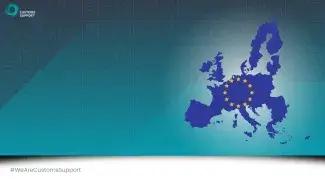How the single EU customs territory currently works
The EU is a single market, allowing for the free movement of goods between its member states. Goods that have completed an import clearance into free circulation one country can be transported and sold to another one without completing further declarations. What this means is that there are several sets of regulations within the same customs territory, a mixture of general and local.
The push towards EU centralised clearances has been in discussions for several years, and certain customs visas have been transferred to a common system. However, there is no official version of an EU centralised window.
In the current system, importers and exporters are used to the required messages being sent to their national customs service and decisions being made by these local authorities. There have been exceptions, but this is rare.
However, there are now some plans to push the EU customs reform and create a new system that truly empowers the single market.
What will the EU customs reform bring?
After the reform, importers and exporters will be able to operate under the same rules throughout the EU using centralised customs clearance. Their local customs will still be the primary contact and processor of the customs claim, but the rules will be universal. This is a huge advantage for traders who are currently navigating customs changes across several countries.
The EU Customs Data Centre will be the engine through which all customs information and messaging will flow, which will reduce the resources required from member states to govern their own processes and rules as they will mostly become obsolete.
This will empower local customs to focus resources on risk management and other controls, as well as reducing barriers to trade between regions.
Following this EU customs reform, customs can help to improve the standard of trading by encouraging reliable and risk-free operators.
What is the timeline?
The first stages are expected to start as early as 2028, when the EU Customs Data Centre will open for online customs clearance. There will also be a major fiscal change for low value products with the creation of only four different categories to significantly simplify customs duties.
In 2032, other operators will begin working with the new system. It will be then that the new Trust and Check system comes into effect, which will work like the current AEOC licence.
In 2035, the EU will decide whether it will become compulsory for all operators. If so, the aim is for full reformation by 2038.
Want to improve your processes as we move towards the EU customs reform?
You can adapt to the ever-changing landscape of regulations by improving your digitalisation in customs. Whether it’s switching to our end-to-end customs clearance service, streamlining your processes with EDI interfacing, or making complicated systems simple with digital customs connections, Customs Support can help you evolve as we approach the EU customs reform and every change that comes before. Contact us for more information.














